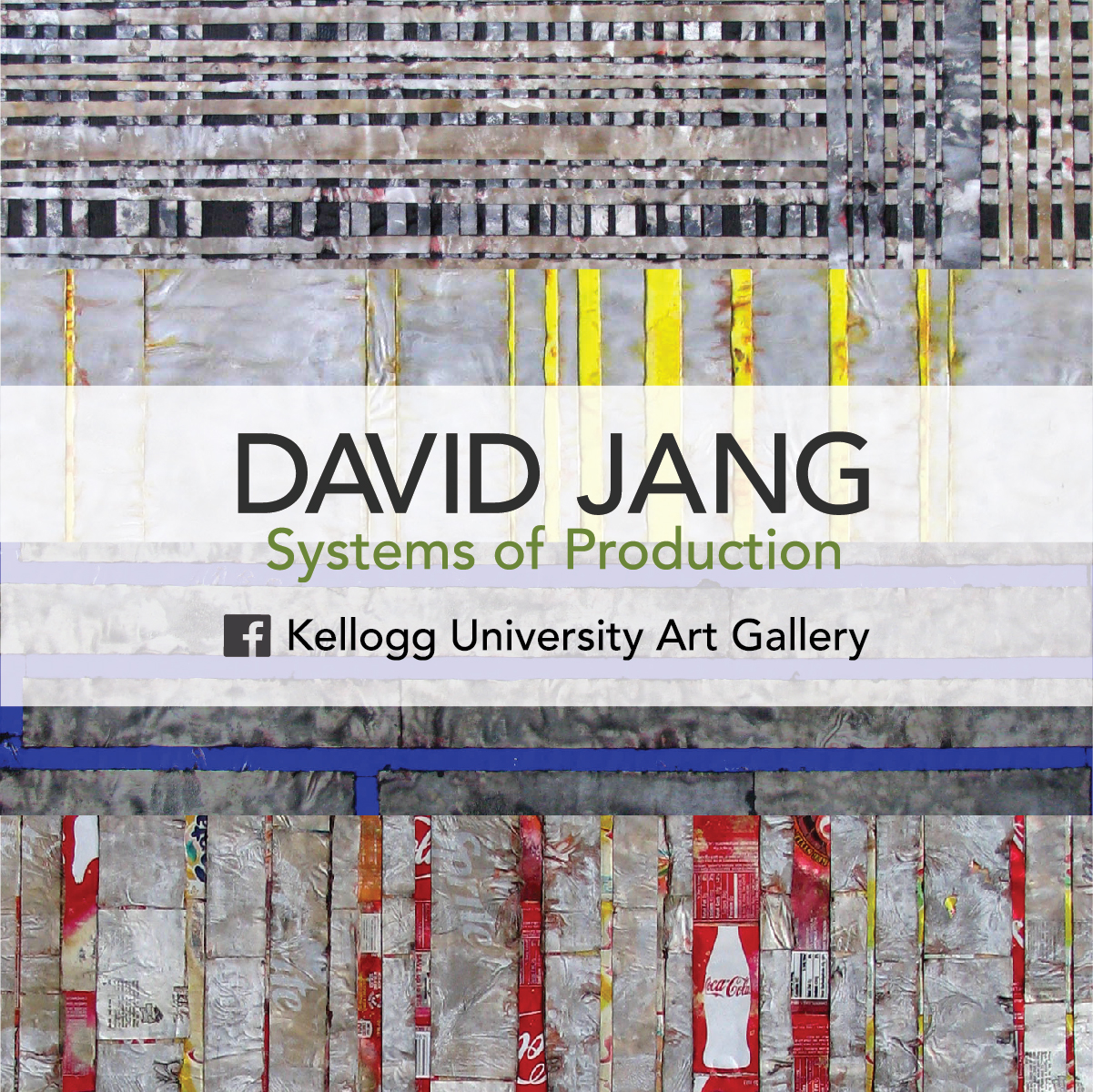Opening Reception: David Jang | Systems of Production
Opening Reception: David Jang | Systems of Production
Date: February 24, 2018Time: 3:00pm to 6:00pm
Location: W. Keith & Janet Kellogg University Art Gallery

Event Info
Date/Time: Saturday, February 24, 3-6 pm
Location: Kellogg University Art Gallery
Join us for the opening reception of David Jang: Systems of Production.
Gallery Exhibition | David Jang: Systems of ProductionAbout the Exhibition
Jang is constantly seeking self-organizing systems known as autocatakinetics. The material of his artworks and their operations and activities function as morphemes, that is, as the grammar of a sociological language. He sees industrial society operating as a living organism, because it is combined with the treatment of organic life forms within our existence.
This artist finds a strange reassurance in rich harmonic practice that addresses the conditions that define our daily existence, by creating a formal aesthetic out of the utilitarian, mass-produced object. In other words, if in society property ownership is a pathway to the "American Dream", then Jang's life tactic is to subvert, dissect, comprehend, and redirect property and its use in mechanical reproduction to verify its potentiality, and truth -or uncover its lie. In this way, the invisible inner workings of things are made visible.
He states that contemporary relations between art, politics, technology and science may be identified as a field of obsessions. By duplicating, multiplying, and unifying the diversity of human activity, represented by consumer materials and artifacts, he desires to emulate the experience of contemporary human urban life. Jang is propelled by the notion of redirecting the short life of cast-off mechanical reproductions into genuine objects of supreme beauty. If consumer materials are becoming the new landscape, and its remnants permanent, then Jang desires to make them approachable, lovely and infinite, instead of heavy-handed, discarded and ugly. He desires not just to make sense of them, but to make them venerable, meaningful and a reflection of human self-consciousness.


